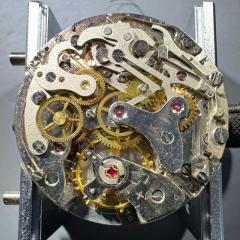Mystery watch movement stamp
-
Recently Browsing
- No registered users viewing this page.
-
Topics
-
Posts
-
By rjenkinsgb · Posted
I hardly have any of myself in the last few decades, though I do have my old passports etc. (with gradually degrading image quality; especially the last barely recognisable one, done in the Post Office dedicated licence & passport booth). Left to right, 1986 (at 30), 1997, 2007, 2018. Once the hair went, I've not really changed. My profile image is from 2001. -
By rjenkinsgb · Posted
You could get one 3D printed in stainless or titanium? Add the rest of the original detail to your existing model and proof check it comes out OK in plastic, then have it done by JLC, Shapeways etc. Not cheap, but you could get a lot closer the original appearance? -
By LittleWatchShop · Posted
Back to lathes...I think you need the sherline mill and a ww lathe. I bought my sherline lathe simply to hold larger work pieces than a WW lathe. So far I have usedbit for making tools and not watch or clock parts. Done very little with the mill, but did experiment with making opinions. Lile yourself, I am a novice that does not shrink from trying the impossible...up to a point. There is a guy on NAWCC forum, Jerry Kieffer who is the master of the Sherline for horologi al work. -
By rjenkinsgb · Posted
Again, EDTA solution as I mentioned above, or Evaporust. They attack oxides but not good metal. After some hours, all the rust should have gone. -
Hi How can I clean this watch case rubber ring? It got the melted gasket on it...
-






Recommended Posts
Join the conversation
You can post now and register later. If you have an account, sign in now to post with your account.
Note: Your post will require moderator approval before it will be visible.